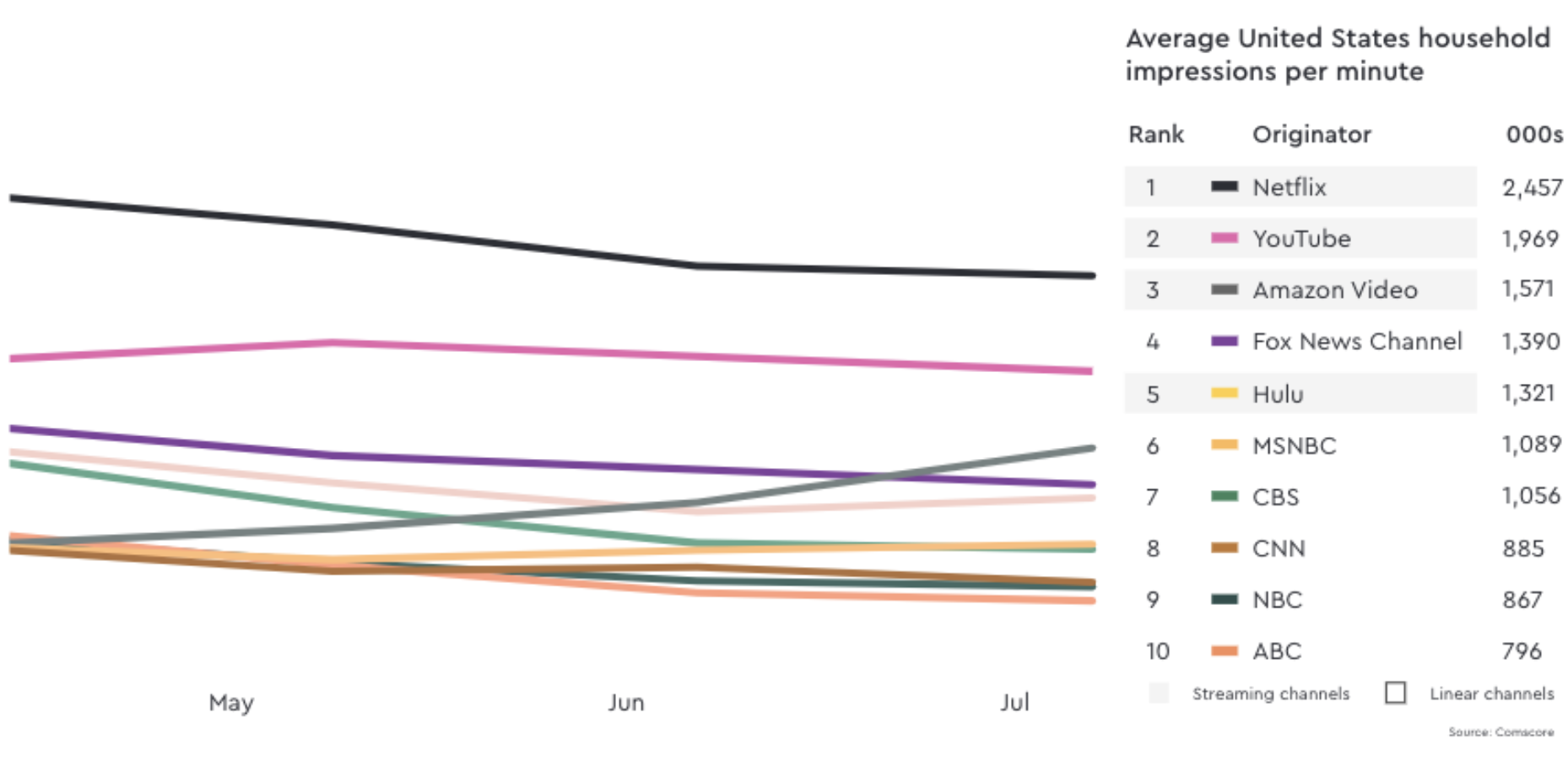
The revolution starts here
A new creative era has dawned, due to the tectonic shift in consumer behaviour that accompanied the pandemic. Brands and established media must adapt fast to a more personalised future – creating opportunities for forward-thinking creatives ready for change.
I’ve stopped saying: “When things get back to normal.” The events of the past several months –a global pandemic, economic fallout, social crises and environmental disasters – suggest there will not be a ‘normal’ to return to. As others struggle with that possibility, I have begun to embrace the opportunity for a creative revolution.
Consumer behaviours are shifting; as creatives and marketers, our job is to adapt. Over the past decade, there’s been a steady move from physical to digital, but the ramp-up of ecommerce during lockdown – in the United States, three years of growth in just three months of 2020 – will have a lasting effect.
The great leap online
Let’s start with data. The Covid-19 pandemic has seen a tectonic shift in consumer behaviour. In the first three months of the pandemic, Netflix, YouTube and Facebook all had double-digit increases in use. Ecommerce penetration soared north of 20%. This has had knock-on effects. According to McKinsey, 75% of consumers have tried different stores, brands or websites during the pandemic, and 60% of those expect to integrate those brands and stores into their post-Covid-19 lives.1 Never has audience attention and engagement shifted so dramatically. To adapt, we need to find a new gear. Meanwhile in May, Stripe CEO Patrick Collison announced that businesses who launched on Stripe since lockdown began had generated more than $1 billion in three months. By August, that figure was $10 billion. Across the internet, the number of new businesses created during lockdown is unprecedented. We are all living online, all the time.
What does this accelerated digital transition mean for creativity? How should brands adapt? And how will this impact creators?
The rise of the machines
In a pervasively digital world, creativity will need to draw even more heavily on data and technology. Different audiences, for example, have different interests and inhabit different cultures. Latinx audiences deserve Spanish-language experiences if they choose; sport enthusiasts deserve experiences that match their passions. The possibilities are dizzying.
We are about to enter a world where all communications will be addressable. For enterprising creatives and brand marketers, this presents an opportunity, as people raised on algorithms expect personal experiences.
This is a daunting time for marketers. While there are lessons from a decade of experiments in social marketing and ecommerce, there are no established playbooks. But forward-thinking brands have experimented their way to success. Nike, for example, has changed how it engages with its audience, balancing broadcast communication efforts with content distribution through social channels.2 It is doubling down on first-party data and user-first engagement, through gorgeous, useful apps and owned properties.
Spotify and Netflix are two more harbingers of the future. Here, the long (content) tail is alive and well. From the listening experience to notifications and emails to actual advertising, Spotify’s brand isn’t so much about Spotify or Travis Scott as it is about you. The same goes for Netflix, where every interaction with the product is unique.
Meanwhile, TikTok is defining culture around the world, thanks to the personal relevance of its signals-based algorithm, fed by audience behaviour. Users don’t have to follow anyone to enjoy the content: the tastemaker is an algorithm. The lesson? The entity at the heart of modern audience engagement isn’t the brand. It’s ourselves.

Medium and message
Our creative challenge is to design experiences and content for this ‘Me+’ era, where personal relevance is the price of entry.
We need to rethink how we seek signals and insights in an algorithmic world. Data, married with contextual cues, offers territories for exploration. Data is nothing more than streams of human behaviour; our understanding of it should reshape what we put out in the world.
In a completely addressable world, data will help us anticipate user needs and determine the best mix of content and the right ad formats. It will lead to a huge increase in branded content – or just content – which can reach audiences beyond traditional media and advertising. Based on data, we will reach audiences largely through programmatic pipes or bespoke relationships with publishers and platforms. In short, a fully addressable future means we need to reunify medium and message.
YouTube is the new TV
While algorithms and machine-generated content will help brands build personal relationships at scale, the pandemic and lockdown have had an equally profound impact on what great content looks like, how it is created, and where it comes from.
As film and television production shut down across the globe in March 2020, we saw the ‘humanisation’ of professional content creators, as news anchors and celebrities broadcast from home on laptop cameras. We also saw a resurgence in DIY creator culture. Jimmy ‘MrBeast’ Donaldson, who boasts 40 million subscribers on YouTube – and had made his reputation pre-Covid-19 – led the way.3 His $250,000 Influencer Rock, Paper, Scissors Tournament racked up tens of millions of views.4 With 30 million views per video episode, MrBeast has twice the average audience of last year’s NBA Finals, weekly. The sheer size of online audiences, once discounted by traditional broadcast and Hollywood players, became even more of a force during lockdown. Visits to YouTube.com soared 15% in March. Savvy marketers and creators leaned further in. Drake teamed with Nike for his new video for Laugh Now Cry Later; that video has garnered more than 90 million views as I write.5 The pandemic created new stars, such as Sarah Cooper, a comedian, author and, yes, former Googler and UX designer, who went viral in April when she lip-synced to Donald Trump on TikTok.6 Hollywood A-listers also migrated online, with varied success.
Personality vs. personalisation
The shocking part of all of this was how far YouTube, Instagram, Snap and TikTok creators were able to match or outperform their Hollywood counterparts. Creators know how to create for their platforms.
Just how much are creators impacting mainstream culture? When the NBA returned after lockdown, two of its previously lesser-known stars, Matisse Thybulle and JaVale McGee, reached millions with vlogs set inside the NBA Bubble in Orlando.7, 8 With premium production still locked down, the runway for native content creators seems unlimited.
New platforms, players and audiences
Expect the further democratisation of content creation and changing audience expectations to have lasting impact. Representation and inclusiveness are sweeping through content creation. While it’s still early days, these changes are long overdue. After weeks of protest and self-reflection, audiences are opening up to new perspectives and platforms. While Pharrell and Jay-Z are hardly unknown upstarts, their collaboration on ‘Entrepreneur’ movingly challenged systemic racism, while spotlighting Black entrepreneurs both known (Tyler, the Creator and Issa Rae) and lesser known (educator TyAnthony Davis, developer Iddris Sandu and foodie Denise Woodard).9 Work like this underscores the role of inclusivity and diversity in fighting monotonous homogeneity.

Traditional definitions of audiences will need to change as well. With the rise of global platforms and a democratised creator community, creators and brands can cross physical borders and tap into internet-sized audiences. The pandemic may unleash a movement of ‘pan-creativity’.
Netflix is taking the lead, investing in content that spans cultures. Extraction, Netflix’s Chris Hemsworth action film, was primarily shot in Bangladesh and designed to appeal to a global audience. Translated into more than 25 languages, it became the company’s most watched original ever, with 99 million accounts streaming it in its first month.10
Every brand is a D2C brand
In our new normal for ecommerce, every brand is now direct-to-consumer (D2C) – a play that was once the exclusive domain of disruptive upstarts such as Warby Parker, Casper, Away, Allbirds and Peloton. NBC Universal, for example, released films directly to consumers. Trolls World Tour broke digital records early into the lockdown.11 Disney, which had already taken a leap into D2C with Disney+, saw its investment pay off.
This direct relationship with consumers will become more critical for brands as commerce, content and advertising merge.
Look at the esports team 100 Thieves, which is as much a premium lifestyle brand as it is about gaming; it is now valued at $125 million.12 Or see how McDonald’s partnered with Travis Scott. The pairing included a limited-edition meal and more than 37 co-branded items.13, 14
Commerce isn’t an afterthought with modern brand building: it’s the centrepiece.
We need to reimagine advertising formats, bringing interactivity to film and ecommerce to every interaction. For a taste, look towards China, and TikTok again. On Douyin, TikTok’s namesake, short videos have clear commerce integrations inside the app. Hosted by influencers or creators, these streams are a mix of sales pitch and product review.15 The heady days of ad format innovation are ahead.
(Not) the same as it ever was
We are moving past the point of no return. Marketers and creatives who built their careers by developing brand stories for broadcast media will need to adapt to a world where brands are experienced on an individual level. Content creation must evolve as barriers between ‘premium’ and ‘creators’ fall away. It’s time to accept that algorithms may know us better than we know ourselves.
Brand marketers will need to rethink organisational silos and traditional creative models. The most agile marketers will evolve and seize the opportunity.
Change is painful, but it can also be liberating. My advice? Accept that returning to pre-pandemic ways of working will be a losing proposition – and create new ones. The future is here; those who embrace it first stand to gain the most.
|
published on
15 December 2021
Category
More in The Atticus Journal

Generative AI: mitigating risk to unlock opportunity
H+K’s Allison Spray on managing the commercial and reputational risks that the proliferation of generative AI will present

Making sustainability profitable
Sustainability investments must deliver returns – both financial and reputational – to be ‘sustainable’ for business. Something needs to change, says Luc Speisser

Sustainability comms must get real
There’s a disconnect between the way corporations talk about climate change and how the public discusses the same issue. That’s the conclusion of research by Jamie Hamill, Alessia Calcabrini and Alex Kibblewhite.

